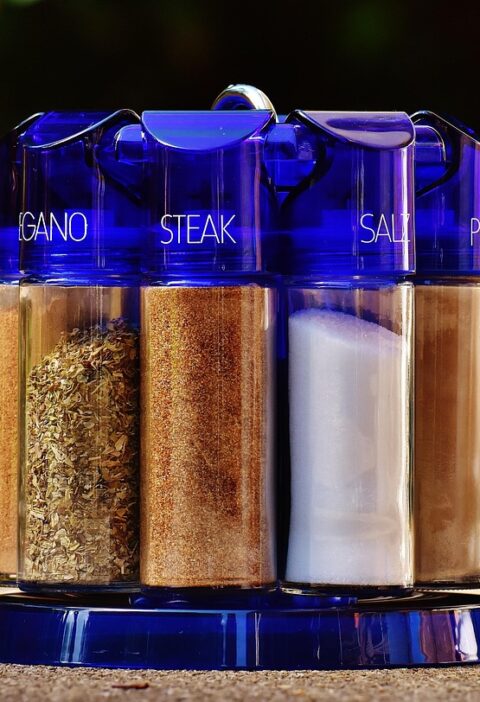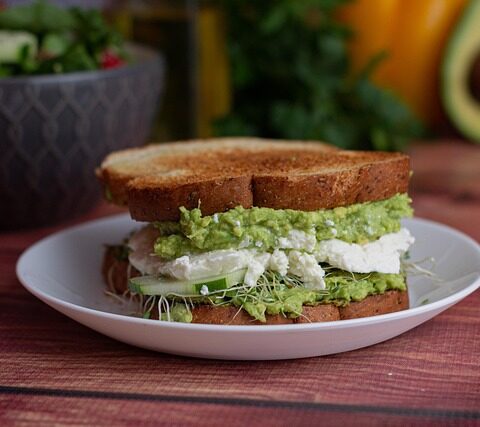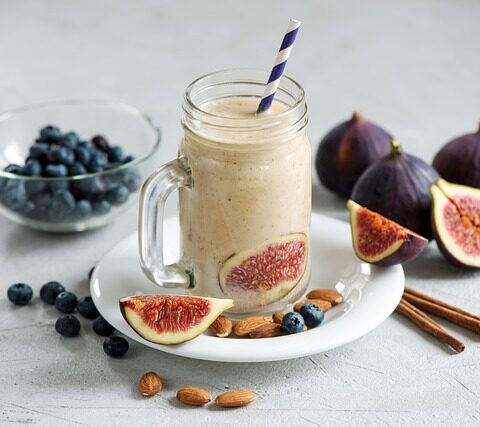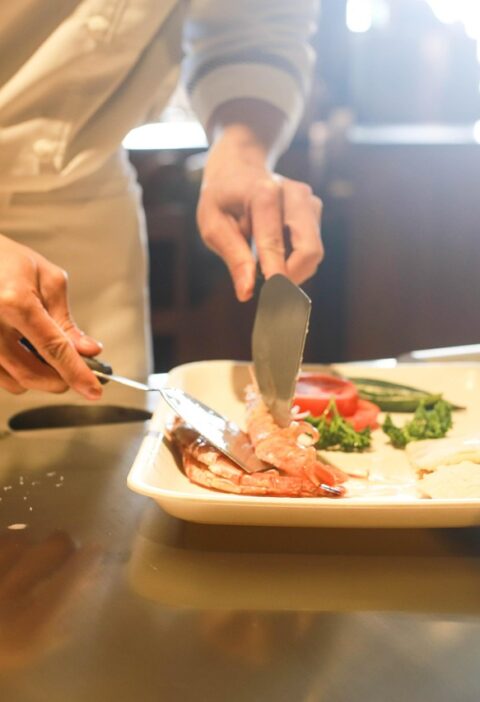To prepare rice may seem easy: it only takes water, rice, and heat, right? However, when you have ever had sticky, gummy, or clumpy rice when you were supposed to have a light and fluffy one, you will know that it is not always that way.
The fact of the matter is that it is a minor art to cook rice to perfection. It is one of those cooking abilities that seem simple on the surface but require practice (and patience) before one can master it. However, there is nothing to fret about because by the conclusion of this guide, you will be well aware of how you can prepare soft, separate, fluffy rice at any time, and without worries.
Let’s dive right in.
Why Rice Gets Sticky in the First Place
Before learning how to fix a problem, it helps to know why it happens.
When rice cooks, it releases starch, a natural powdery substance found in the grains. This starch dissolves into the cooking water and makes it thick and cloudy. If too much starch stays on the rice, it causes the grains to glue together once the water starts boiling.
So, when you find your rice sticking together or turning mushy, it’s not because you’re unlucky; it’s usually because:
- You didn’t rinse the rice before cooking
- You added too much water
- You stirred the rice too often while it was cooking
- You cooked it on high heat for too long
- You didn’t let it rest properly after cooking
Sounds familiar? Don’t worry, we’ll go step by step to fix every one of those.
Step-by-Step Guide to Cooking White Rice Without It Sticking
Here’s the method I recommend; it’s simple, foolproof, and works every single time if you follow carefully.
Step 1: Measure the Rice and Water Correctly
Rice is a bit like baking; the proportions matter.
For most types of white rice, the ideal ratio is:
- 1 cup of rice : 2 cups of water
- If you like your rice a little firmer, use slightly less water (1¾ cups).
- If you like it softer, use a tiny bit more (2¼ cups).
But don’t just guess, measure it properly. Using too much water is one of the biggest causes of sticky rice. Once rice absorbs too much water, it becomes mushy and bursts open.
Use the same cup for both rice and water so your ratio stays consistent.
Step 2: Rinse the Rice (Don’t Skip This Step)
This is the secret to non-sticky rice.
- Put your rice in a bowl and pour in enough water to cover it. Use your hand to gently swirl the rice. The water will turn cloudy, that’s the starch washing off.
- Drain the water and repeat this 3–4 times until the water looks almost clear.
- It may seem like a small step, but it makes a huge difference. Rinsing removes excess starch so the grains don’t glue together when cooked.
If you’re cooking a large batch, use a sieve or fine colander to make rinsing easier.
Step 3: Choose the Right Pot
The pot you use matters a lot.
Avoid thin aluminum pots; they heat unevenly and can cause rice to burn or stick at the bottom. Instead, use a non-stick pot or one with a thick, heavy base (like stainless steel or a rice cooker pot). These distribute heat evenly and protect the rice from hot spots.
If you cook rice often, investing in a rice cooker is worth it. It removes all the guesswork and gives you consistent results.
Step 4: Bring the Water to a Boil First
Before adding your rice, bring the water to a rolling boil. Add a pinch of salt and a teaspoon of oil or butter if you like.
Adding rice to boiling water helps the grains cook faster and stay separate. Starting with cold water makes rice release more starch, which causes stickiness.
Once the water is boiling, gently pour in your rinsed rice.
Step 5: Stir Once, and Only Once
After adding the rice, stir just once to make sure all the grains are evenly distributed. Then leave it alone.
Many people make the mistake of stirring rice repeatedly while it cooks, but the more you stir, the more starch is released, and the stickier your rice becomes.
So after that first stir, don’t touch it again.
Step 6: Lower the Heat and Cover Tightly
Once your rice has been added and stirred, cover the pot with a tight-fitting lid and reduce the heat to low. You want the rice to steam gently, not boil violently.
If your lid isn’t tight, steam will escape, and the rice may dry out or cook unevenly. You can seal the pot with foil before covering it to keep steam inside.
Let it cook for about 15–18 minutes. Don’t open the lid during this time; lifting it releases steam, and steam is what makes the rice soft and fluffy.
Step 7: Turn Off the Heat and Let It Rest
Once your timer hits 18 minutes, turn off the heat but don’t open the lid yet.
Let the rice rest for another 10 minutes off the heat. During this time, it finishes steaming and the moisture redistributes evenly.
After resting, open the lid and gently fluff the rice with a fork, not a spoon. Forks help separate the grains without crushing them.
If a few grains stick together, don’t worry. Let the rice cool slightly before serving; it naturally becomes less sticky as it cools.
Simple Tricks to Keep Rice from Sticking
Add a Few Drops of Oil: A teaspoon of vegetable oil, butter, or coconut oil added to the cooking water coats the grains and keeps them from clumping.
Use the Right Kind of Rice: Short-grain rice (like sushi rice) is naturally stickier because it has more starch. Long-grain rice (like parboiled or basmati) stays fluffier.
Don’t Skip the Resting Stage: The 10-minute rest after cooking is not optional; it helps balance the moisture so your rice isn’t wet on top and dry underneath.
Avoid Overcooking
Cooking rice for too long breaks down the grains and releases more starch, making it gummy. Always use a timer.
Use a Rice Cooker If You Can
Rice cookers automatically handle timing and temperature. Perfect results every time, with no stress.
Common Mistakes and How to Fix Them
Mistake 1: Not Rinsing the Rice
Skipping the rinse leaves too much starch and makes rice sticky.
Fix: Rinse until water runs clear.
Mistake 2: Too Much Water
Excess water breaks down the structure of the grains.
Fix: Stick to the 1:2 rice-to-water ratio.
Mistake 3: Stirring Too Much
Overstirring makes the rice mushy.
Fix: Stir only once after adding to boiling water.
Mistake 4: Lifting the Lid Too Early
Releasing steam affects even cooking.
Fix: Keep the lid closed until the end.
Mistake 5: Not Letting It Rest
Serving rice immediately makes it clump.
Fix: Rest for 10 minutes before fluffing.
How to Make Your Rice More Flavorful
You can add flavor without making your rice sticky. Try these ideas:
Cook it in chicken or vegetable broth instead of water.
Add a bay leaf, cinnamon stick, or clove to the pot while cooking.
Mix in a little butter or olive oil for aroma and softness.
Stir in fried onions, garlic, or herbs after cooking for extra taste.
What to Do If Your Rice Still Gets Sticky
Sometimes, even if you follow every step, rice can still turn sticky. Don’t throw it away. Here’s how to fix it:
If slightly sticky: Spread it on a tray and let it cool for 5–10 minutes. Air drying will help separate the grains.
If very sticky: Rinse gently with warm water in a sieve, then let it drain. You’ll lose a bit of flavor but save the texture.
If mushy: Turn it into fried rice. Chill it in the fridge for a few hours first — it’ll firm up and fry beautifully.
Alternative Cooking Methods
If the regular pot method feels tricky, you can try these:
Rice Cooker, the easiest option. Rinse your rice, add water, and press “cook.” It handles everything automatically.
Absorption Method: The boil, simmer, steam, and rest process described above. Gives firm, separate grains.
Drain Method (Like Pasta): Boil plenty of water, add rice, cook until tender, then drain and steam briefly. This method seldom gives sticky rice.
How to Store and Reheat Rice
Even perfect rice can turn sticky or dry when reheated the wrong way.
To Store:
- Let rice cool completely before storing.
- Use an airtight container.
- Keep in the fridge for up to 4 days.
To Reheat:
- Sprinkle a few drops of water over the rice before microwaving to keep it fluffy.
- Or steam it on the stove for a few minutes with the lid on.
- Never leave cooked rice at room temperature for too long. Always refrigerate within 1–2 hours after cooking to stay safe.
Extra Tips from Everyday Cooks
In Nigeria: Add a few drops of vegetable oil to boiling water to keep grains separate.
In India, A squeeze of lemon juice keeps rice white and prevents sticking.
In Japan, Rice is rinsed multiple times to keep the grains glossy and distinct.
In Thailand, the “finger rule” is used; the water should reach your first knuckle when you touch the rice.
Conclusion
Cooking perfect, non-sticky rice isn’t about luck; it’s about understanding the small details that matter.
When you rinse your rice, measure your water correctly, use gentle heat, and let it rest after cooking, you’ll get soft, separate grains every time.
Once you master plain rice, it becomes easier to cook other types, basmati, jasmine, brown, or parboiled, because the same principles apply.
So next time someone says rice is hard to cook, you can smile and say,
“Only if you don’t know the secrets.”
Now you do, so go ahead and show off your perfect pot of rice.








